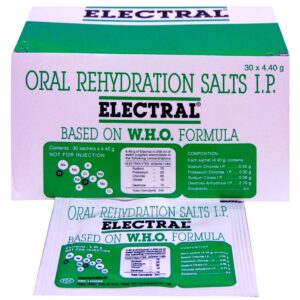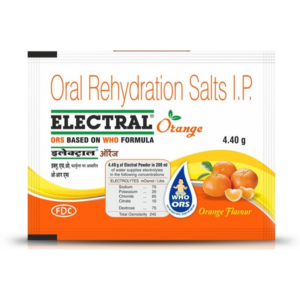NACL + KCL + NA CITRATE + ANHYDROUS DEXTROSE
Nacl: Nacl, also known as sodium chloride or common salt, is a medication commonly used as a salt replacement in the body. Sodium chloride is an essential mineral that plays a crucial role in various physiological functions.
Mechanism of Action:
Nacl works by maintaining the electrolyte balance in the body, which is essential for normal cell function and fluid balance. It helps regulate blood pressure by controlling fluid levels in cells and tissues. Sodium is also involved in transmitting nerve impulses and muscle contractions.
Use:
Nacl is used for various medical purposes, including:
1. Hydration: It is commonly used to replace fluids and electrolytes lost due to illness, excessive sweating, or dehydration.
2. Intravenous Therapy: Nacl is frequently used as an intravenous solution to provide fluids and maintain electrolyte levels during surgery, blood transfusions, or certain medical conditions.
3. Inhalation: Nacl is used as a nebulizer solution in respiratory therapy to help liquefy and loosen mucus in the airways, making it easier to cough up.
Dose:
The recommended dose of Nacl varies depending on the specific indication and individual patient needs. It is typically administered intravenously or used as an inhalation solution according to the healthcare provider’s instructions.
Side Effects:
While Nacl is generally safe, it may cause some side effects, including:
1. Fluid Overload: Excessive administration of Nacl can lead to fluid overload, resulting in swelling, shortness of breath, and increased blood pressure.
2. Electrolyte Imbalance: In cases of prolonged or excessive Nacl use, it can disrupt the normal electrolyte balance in the body, leading to symptoms such as weakness, muscle cramps, and irregular heartbeats.
3. Allergic Reactions: In rare cases, some individuals may experience allergic reactions to Nacl, which can present as hives, rash, itching, difficulty breathing, or swelling of the face, lips, tongue, or throat.
It is essential to follow the prescribed dose and carefully monitor patients receiving Nacl to avoid potential complications associated with fluid and electrolyte imbalances.
Note: It is important to consult a healthcare professional or pharmacist for specific dosing instructions and guidance based on individual medical needs.
Kcl: KCl, also known as potassium chloride, is a medication primarily used to prevent or treat low potassium levels in the blood, a condition called hypokalemia. It is an essential mineral that plays a vital role in various bodily functions including nerve conduction, muscle contraction, and maintaining proper heart function.
Mechanism of Action: KCl works by replenishing the low levels of potassium in the body. Potassium is an electrolyte that helps maintain the balance of fluids and electrolytes within cells. By taking KCl, the potassium ions are restored and contribute to the normal functioning of cells, nerves, and muscles.
Dosage: The dosage of KCl depends on the severity of the potassium deficiency and the individual’s medical condition. It is available in various forms such as tablets, capsules, powder for oral solution, and liquid for injection. Dosage recommendations may vary, but generally, the usual adult oral dose for treating hypokalemia ranges from 20 to 100 milliequivalents (mEq) per day. However, it is important to follow the specific instructions provided by the healthcare professional.
Side Effects: Although KCl is generally safe when used as directed, it may cause some side effects. Common side effects may include stomach upset, nausea, vomiting, diarrhea, or abdominal discomfort. In some cases, particularly with large doses, it can lead to more severe complications such as irregular heart rhythm, hyperkalemia (high potassium levels), muscle weakness, or numbness. Individuals with kidney disease or certain cardiac conditions may be more at risk for these side effects.
It is essential to consult a healthcare professional before starting KCl to determine the appropriate dosage and to discuss any existing medical conditions or medications that may interact with KCl. Regular blood tests may be necessary to monitor potassium levels and adjust the dosage accordingly.
Na Citrate: Drug Name: Na Citrate
Use: Na Citrate is a medication used to treat metabolic acidosis, primarily in patients with kidney problems or conditions that cause excess acid production. It works by neutralizing the acidity in the blood, helping to restore the body’s pH balance.
Mechanism of Action: Na Citrate is an alkalizing agent that works by converting into bicarbonate in the body. Bicarbonate helps to buffer excess acid in the blood, raising the pH levels and restoring the normal acid-base balance.
Dose: The dosage of Na Citrate can vary depending on the individual’s condition and the severity of metabolic acidosis. It is usually administered orally in the form of a solution or tablet. The dosage is typically determined by a healthcare professional and may be adjusted over time based on response to treatment.
Side Effects: Like any medication, Na Citrate can have side effects. Common side effects include nausea, vomiting, diarrhea, abdominal pain, and flatulence. These side effects are generally mild and resolve on their own. However, if they persist or worsen, it is important to contact a healthcare professional.
In rare cases, allergic reactions to Na Citrate may occur. Symptoms of an allergic reaction can include rash, itching, swelling (especially of the face, lips, or tongue), severe dizziness, or difficulty breathing. If any of these symptoms occur, immediate medical attention should be sought.
It is important to consult a healthcare professional before starting Na Citrate or any other medication, as they can provide personalized information regarding dosage, interactions with other drugs, and potential side effects based on an individual’s medical history and current medications.
Anhydrous Dextrose: Anhydrous Dextrose, also known as D-glucose or simply glucose, is a pharmacological agent used primarily for intravenous administration to treat dehydration and hypoglycemia. It is a simple sugar and the most essential energy source for the body’s cells.
Anhydrous Dextrose acts as an immediate source of energy by increasing the blood glucose levels. It works by rapidly delivering glucose into the bloodstream, where it can be taken up by cells to produce ATP (adenosine triphosphate) – the main energy currency of the body.
The dose of Anhydrous Dextrose varies depending on the patient’s age, condition, and the specific medical situation. It is typically administered intravenously and the dosage is determined by the healthcare professional. The concentration of glucose solution commonly used is 5% or 10%.
Like any medication, Anhydrous Dextrose can cause side effects. Some common side effects include:
1. Running or stuffy nose
2. Nausea and vomiting
3. Abdominal discomfort
4. Diarrhea
5. Flushing or redness of the skin
6. Increased sweating
It is important to note that severe adverse reactions to Anhydrous Dextrose are rare. However, if any unusual symptoms occur or if there is an allergic reaction (rash, itching, swelling, severe dizziness), immediate medical attention should be sought.
Anhydrous Dextrose should be used with caution in patients with diabetes as it can raise blood glucose levels. It should also be used judiciously in patients with liver disease or impaired liver function. Additionally, Anhydrous Dextrose is contraindicated in patients with known hypersensitivity to glucose.
Overall, Anhydrous Dextrose is an essential drug for rapidly increasing blood glucose levels and providing immediate energy support. However, its use should be closely monitored by healthcare professionals, particularly in patients with underlying medical conditions.



